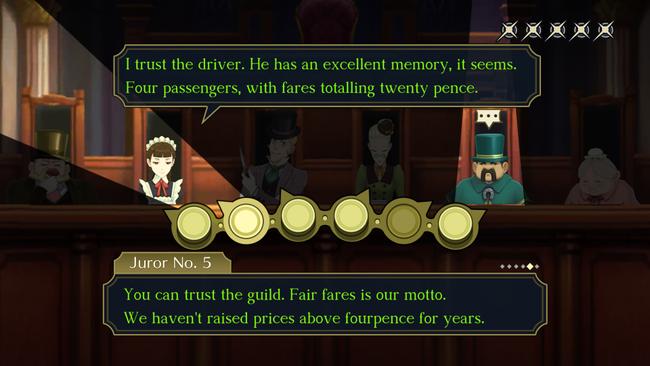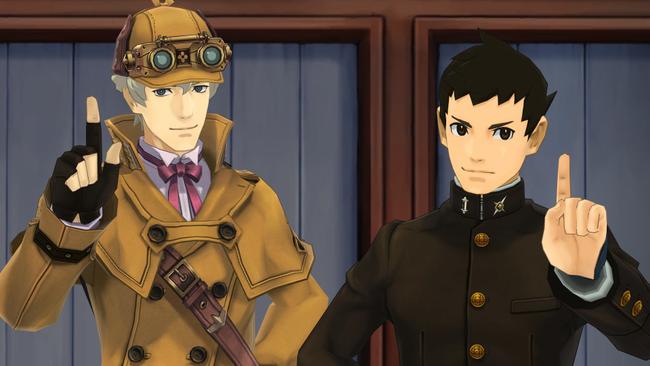
The Great Ace Attorney Chronicles Review
I think we can agree that there’s a danger that comes from setting expectations; there’s been a number of times, where previously un-translated games have finally made the jump over to western shores, just to lead to disappointment because they couldn’t match up to the hype. Time and again, the same song and dance, and it’s hard for me to start up a game with such a high level of excitement behind it, without an equal amount of skepticism. Even if a game is fantastic, nobody wants to get burnt.
Capcom’s The Great Ace Attorney: Chronicles is the latest example of this trend – a duology with a storied history, originally releasing on the 3DS in Japan. Despite how prevalent the games and characters might seem to be in hardcore gaming circles, the franchise has never done incredibly well in the west – and when original series’ creator Shu Takumi returned to the podium for 2015’s The Great Ace Attorney: Adventures, it makes sense that Capcom might’ve had some hesitancy with bringing the entry overseas. Part of that stems from the obvious connection the game’s share with The Adventures of Sherlock Holmes – naturally, that’s the first obvious change that we see with the duology’s western release. Presumably due to the litigious nature of the Doyle estate, most characters tied to the wider lore of the Great Detective have had their names changed – Holmes becomes Sholmes, and Watson into Wilson.
If you’re familiar with Ace Attorney, then the gameplay should be familiar, albeit with a few tweaks; but if this is your first foray into the series, here’s what you need to know. You play as a burgeoning Defense Lawyer, defending your client from an accusation of some sort – usually murder – who’s tasked with investigating scenes, interrogating witnesses, and piecing together the mystery of what really happened, both inside and outside of the courtroom. In essence, it’s a bit of a point-and-click adventure, and broadly speaking the gameplay can be classified into two distinct categories – first of which being the investigation sections. You’ll be moving around areas related to the case, investigating the scene and gathering as much information as you can before the trial begins. New to The Great Ace Attorney are Logical Deductions: owing to “Herlock Sholmes” and his introduction to the plot, players are occasionally tasked with putting together what happened at the scene of a crime – correcting the “Great Detective” and his logical missteps along the way. Players are tasked with viewing a scene from different angles to find clues in order to continue the “dance of deduction”, and ultimately solve the mystery at the heart of the current problem.

The other major additions to the gameplay come in the Courtroom. The basics of Ace Attorney’s trial gameplay remains the same – Witnesses are brought to the stand, you press them for more information, and you present the right evidence to counter claims that run afoul of the facts. New to Great Ace Attorney is the ability for multiple witnesses to take the stand at the same time, which can add another wrinkle to matters. Sometimes after pressing witnesses for additional testimony, others at the stand might react to the events being relayed – giving you a chance to butt in, offering a new opening.
Finally, and by far the most significant change to the gameplay, comes down to the Jury System. While previous games in the series have included Juries as a concept, Great Ace Attorney offers players a chance to directly interact with them in the gameplay. Whenever the Jury reaches a Guilty verdict, players are afforded a last-chance to try and change their minds – the Summation Examination. Each member of the Jury is asked the reasoning for their decision, and players attempt to sway their minds by pitting two Jurors with opposing views on the case against each other. Even outside of these segments, just having the jurors react to the events of the trial helps make each case feel like they have larger consequences for the story as a whole. All of these changes serve to make Great Ace Attorney live up to its name, offering the “greatest” deviation from the series’ main formula yet. Cases feel fresh and new in ways that they never have before, but mechanics are only half of the puzzle – what makes Great Ace Attorney “Great”, is the story.

As I said earlier, Great Ace Attorney draws inspiration from the canon of Sherlock Holmes; characters, places, and even plotlines are adapted to fit a story about Japanese Defense Lawyer Ryunosuke Naruhodo and his adventures in Great Britain. More importantly, there’s a reason why Capcom isn’t allowing players to buy Great Ace Attorney: Adventure and Great Ace Attorney: Resolve separately. Unlike other entries in the series, it’s fair to say that Great Ace Attorney 1 and 2 are two halves of the same story – while the original trilogy builds upon characters from previous entries, each game introduces and wraps up its own plotlines. The same can’t be said for Great Ace Attorney.
The result is a slower paced, more character-driven story. Players will grow to learn about the forces that drive the main characters, and Herlock Sholmes isn’t just used as a gimmick to progress the plot; he’s an integral main character that you’ll grow to love. His cheeky antics and misguided wit are a highlight of the games, for sure, but other characters like Soseki Natsume, Susato Mikotoba and more all contribute their own flavor to the game’s overarching story. As the game deals with some heavy topics, even more than with other games in the series, it’s hard to not grow attached to the cast and lament their struggles.

It’s nearly impossible to talk specifics about what makes the game’s plot so fantastic without spoiling the surprise – regrettably, even stating what the themes of the game actually are could go a long way in lessening the impact when the other shoe drops. The best word I can use to describe Great Ace Attorney is “weight”. The series has always had something to say, all the while wearing its goofy world and characters like a badge of honor. That much hasn’t changed, but make no mistake – sooner or later you’ll run across Great Ace Attorney’s main themes, and by the time the story is over, it’s impossible to not view the whole journey in a different light. There’s an edge to this duology’s world and characters that separates it from its predecessors, and the advantage that Takumi must’ve had with two full games worth of build-up cannot be overstated. All of this is accompanied by one of the strongest soundtracks to grace the series’ history, giving these powerful moments when all of the build-up comes together the gravity they deserved, while also setting the tone for locations and characters before words hit the screen.
The Great Ace Attorney Chronicles isn’t perfect, but it’s the closest that the series has ever been to that lofty goal. These games are Shu Takumi at his absolute best, and it’s a blessing that western players finally have the chance to play them without resorting to fan translations. Whether you’re a new fan, or have been with the series from the very beginning, I can’t recommend The Great Ace Attorney: Chronicles enough.